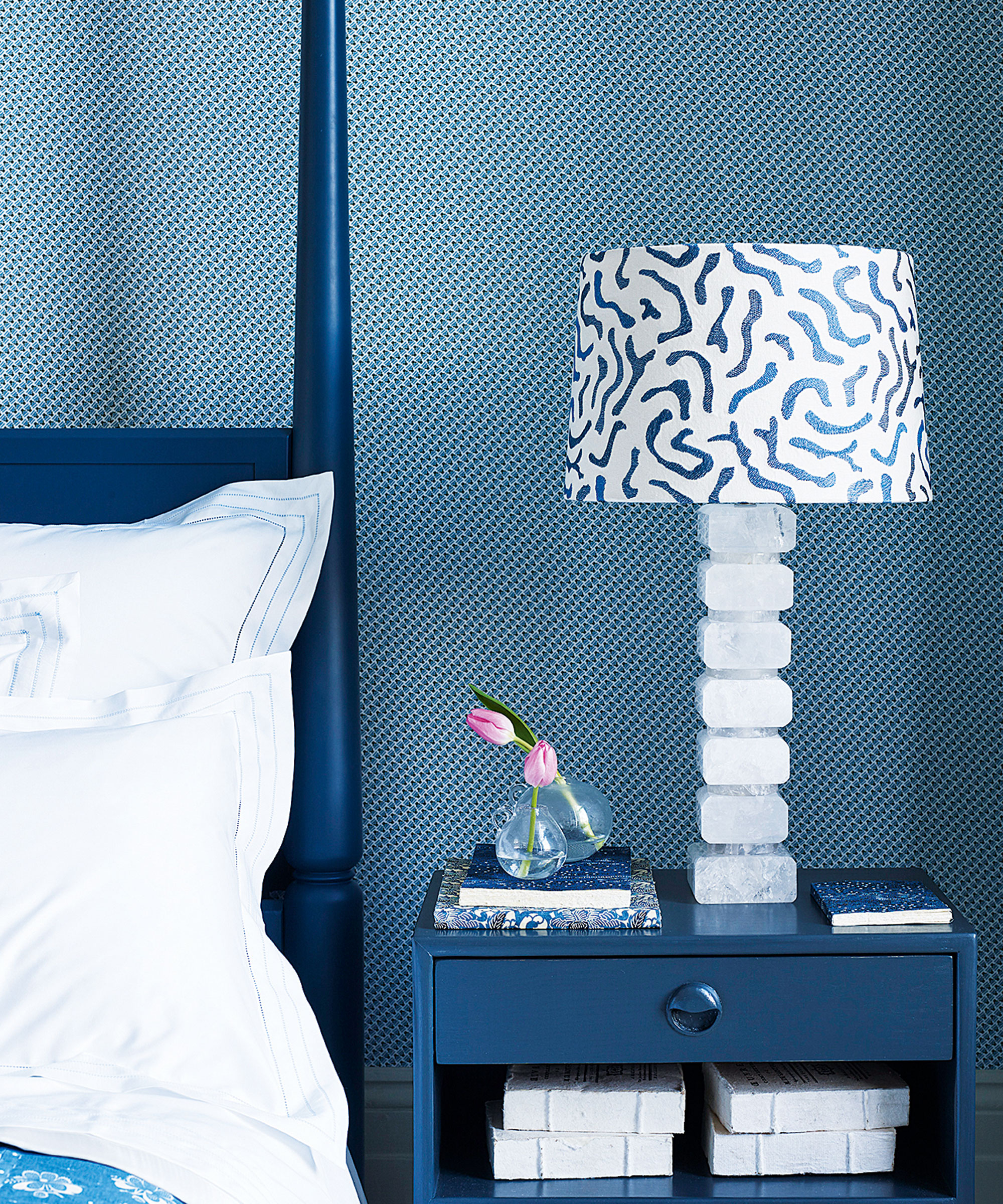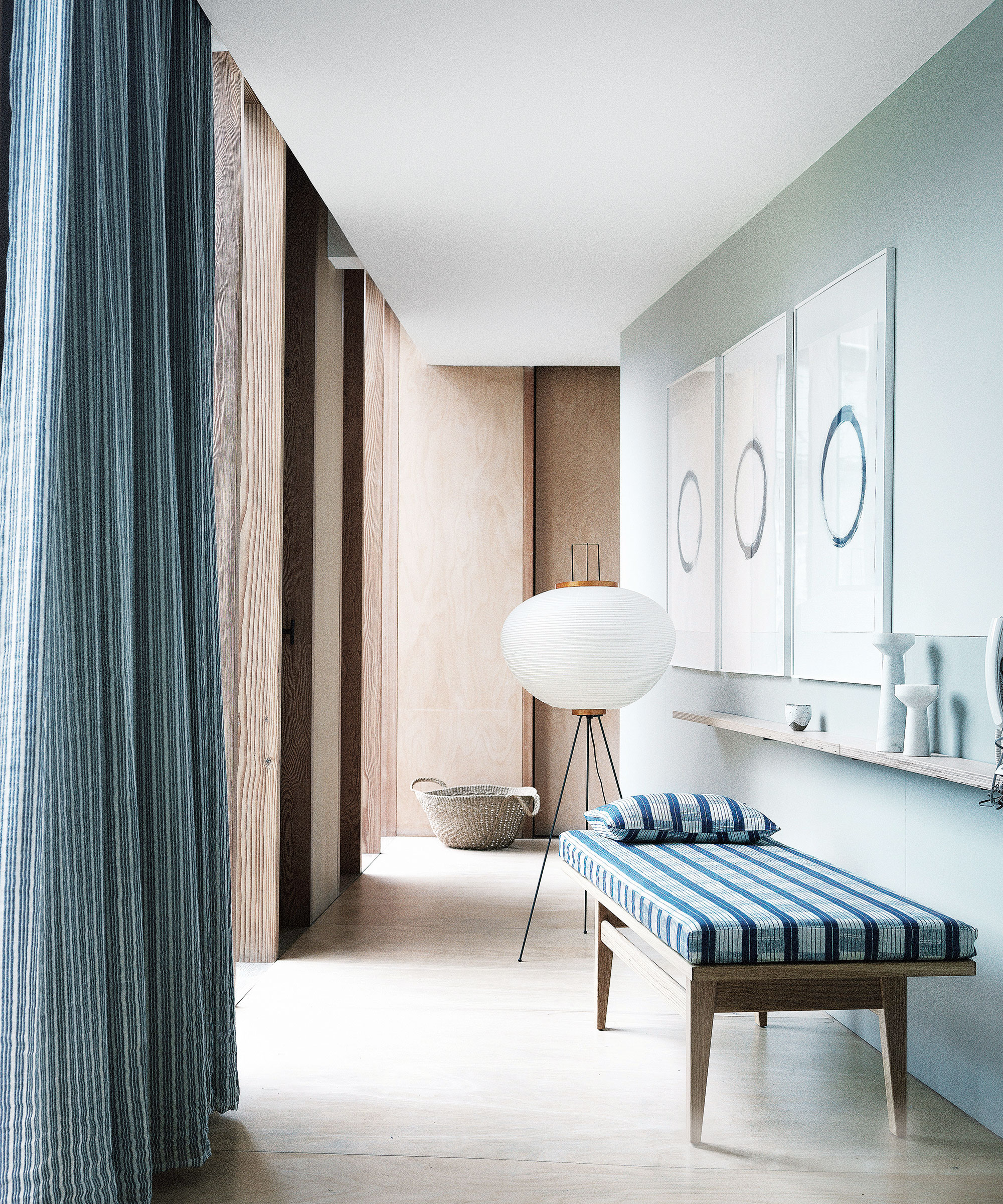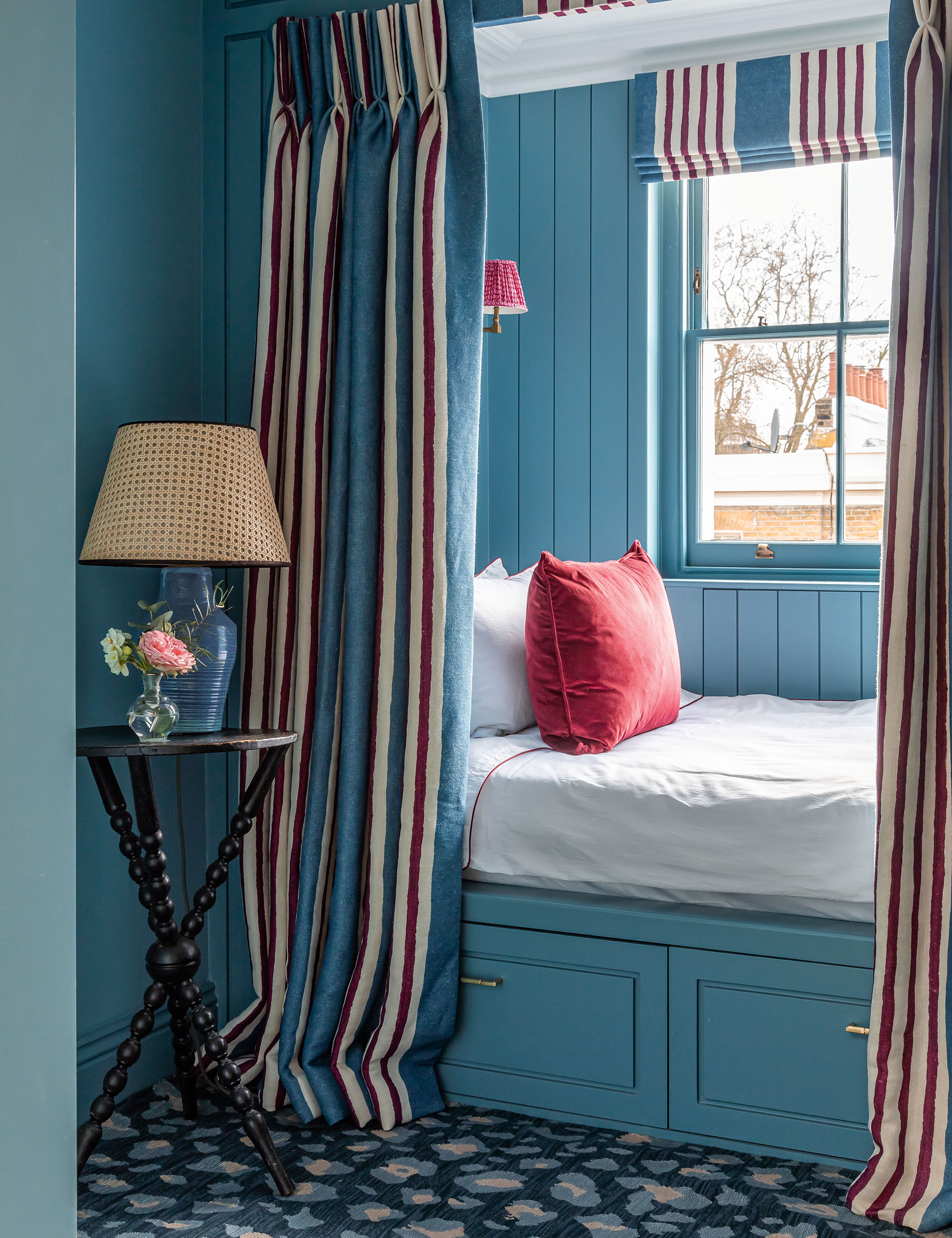What color reduces stress? The one shade that has the power to heal, according to experts
Blue is considered the most stress-relieving color, influencing everything from our behavior to our decorating choices


Are you are struggling with increased stress and anxiety? Then your home may be to blame; the color scheme to be precise. According to color psychologists, the best color to reduce stress is 'blue'.
Symbolizing empathy, freshness, and vitality, the color blue is an enduring favorite when it comes to interiors. Whether using it as a statement pattern, as a bold block color, or as a subtle accent, using blue in the home is a tried-and-tested method to reduce stress, calm, and heal the mind.
Room color ideas are the perfect way to transform a space easily, adding personality and character, says Ruth Mottershead, creative director of Little Greene. However, while bold, vivid tones work well in rooms made for entertaining, or see a lot of activity, using bright colors can sometimes cause stress in someone who may already be suffering from anxiety, so you'll want to consider what color is good for health and what are the most relaxing colors for your home.
Here color psychologists, interior designers, and experts reveal why decorating with blue will aid stress relief – and how to curate blue room ideas that are pleasing by using the color wheel to create calming color combinations for rooms, using blue as an accent shade, and what variations to use to create a scheme that won't overwhelm.
What color reduces stress?
As well as reducing stress, this timeless color is cool and calm and works well in both classical and contemporary schemes. Blue runs the whole gamut of shades from delicate eau de Nil to the deepest, darkest, inky blues – they are easily the palette of choice for many, from amateur decorators to interior designers as they’re incredibly easy to live with and perfect for layering, believes Patrick O’Donnell of Farrow & Ball. ‘Blue also comes with positive attributes in color psychology, such as anxiety-relief, sympathy, warmth, encouragement, spirituality, loyalty, and thoughtfulness.’
Blue doesn't have to be boring. 'Working with shades of blue is endlessly interesting – and playing with tones and textures can change it from subtle and serene to a vibrant jewel box,' says Samantha Todhunter, found Samantha Todhunter Design.

What color causes stress?
As anyone who has been through the process of searching for room colors will attest, it is also worth thinking about what colors cause anxiety, what color makes you angry, and what is the most stressful color, too.
Design expertise in your inbox – from inspiring decorating ideas and beautiful celebrity homes to practical gardening advice and shopping round-ups.
Red room ideas can be too harsh and aggressive for some people, and it is one of the worst colors to paint a room.
Decorating with red could also be one of the reasons why your friends hate your house. Often used as a warning sign, a red color scheme reminds us of danger. Physically, red can induce chemical reactions in the body that are similar to danger-bearing stress responses, such as increased heart rate and higher body temperature.
What does the color blue symbolize?
Often described by color psychologists as a non-threatening color, the color blue symbolizes calmness, serenity, and tranquillity, making it a wonderful choice if you hope to reduce stress and anxiety in humans.
'One important thing to remember when choosing a stress-reducing color scheme is that there is no "one size fits all" rule,' says Karen Haller, color psychology specialist, teacher, and best-selling author of The Little Book of Color. 'Cultural differences, past experiences, and emotions can play a significant role in how people perceive color.'
'The color that reduces stress for you is entirely personal,' she says. 'It could be a color that conjures up a personal memory that has positive or pleasant feelings. This might not necessarily be blue. However, blue is believed to help with stress management because it can encourage a powerful sense of stillness.
Do pay close attention to how the color blue makes you feel and then carefully consider whether this color would work in your home to reduce stress.
How to use the color blue to reduce stress?
Predominantly blue color schemes – from sky blue through azure and on to cobalt and indigo – bring serenity and tranquillity to any space because they are on the cooler end of the spectrum. Here is how to use blue to reduce stressors.
1. Instil serenity in the bedroom with calming blues

Romilly wallpaper, Virginia White. Rock crystal lamp; Warwick shade in Keros linen, both Vaughan
Good bedroom color ideas stem from a desire to create a particular mood or feel – with stress-relieving color the route to its successful creation. Color can soothe, warm, or nurture, and in doing so bring better sleep, make you feel more relaxed, or promote wellbeing.
In this serene scheme, a calm sea of indigo blues makes for an inviting retreat. The small-scale pattern in the wallpaper, a more textural alternative to paint, works well with the playful lampshade design. Mixing the blue patterns with white keeps the scheme crisp. Blue-tinted furniture continues the theme.
2. Look up to the ceiling

Ceiling ideas offer scope to expand your creativity and enhance your relaxation beyond your four walls. ‘The fifth wall is a great way of adding another layer of interest and making a space feel soothing, cocooning, and cozy. All too often they are an afterthought but we must make sure to consider their decorating – and emotive – potential,’ confides interior designer Nicola Harding.
Here, the use of two blues in this living space, one on the walls and a paler hue on the ceiling, combined with white woodwork, draws your eye upwards, evoking the feeling of being surrounded by clear skies.
3. Evoke stillness with a blue and white color combination

Inspired by the considered simplicity of Japanese style, this modern entryway evokes a zen-like calm. Combining blue and white with pale woods in this way offers a softer, more organic take on decorating with these two colors. This classic pairing has enduring appeal and will appeal schemes that are fresh and elegant.
Because cool tones aren’t overpowering – in fact, blue will often make a room feel like it is receding – rooms in these shades often help a small room appear to have more space, which can make them a great choice also for narrow entryways.
4. Curate a tranquil guest bedroom

Blue, whether pale or dark, makes for a calming backdrop for a guest or child's bedroom which can be instantly enlivened with reds, oranges, pinks and yellows.
‘Bold, impactful and elegant, this is known to be a very calming hue making it a great choice for a guest bedroom,' says Lucy Barlow, creative director, Barlow & Barlow. 'Adding accents of red or pink help soften and warm up the space.’
5. Take blue to a dining space

Walls in French Blue, Edward Bulmer Natural Paint. Wall light, Fritz Fryer. Wishbone dining chair, Hans J. Wegner. Bench, bespoke
Blue isn't usually the first option for dining rooms due to its cool nature and unappetizing appeal, but you can decorate with blue successfully in a dining space if you know how.
Designer Laura Stephens chose this hue because she wanted a ‘lively’ blue – one that still had a calming influence – with depth and vibrancy for this dining space.
It is vital to think about color combinations when using blue in the dining room. Greens and greys are classic combinations, agrees Dominic Myland, owner of paint company Mylands, but contrasting pinks, browns and oranges are increasing in popularity for a layered look.

Jennifer is the Digital Editor at Homes & Gardens, bringing years of interiors experience across the US and UK. She has worked with leading publications, blending expertise in PR, marketing, social media, commercial strategy, and e-commerce. Jennifer has covered every corner of the home – curating projects from top interior designers, sourcing celebrity properties, reviewing appliances, and delivering timely news. Now, she channels her digital skills into shaping the world’s leading interiors website.